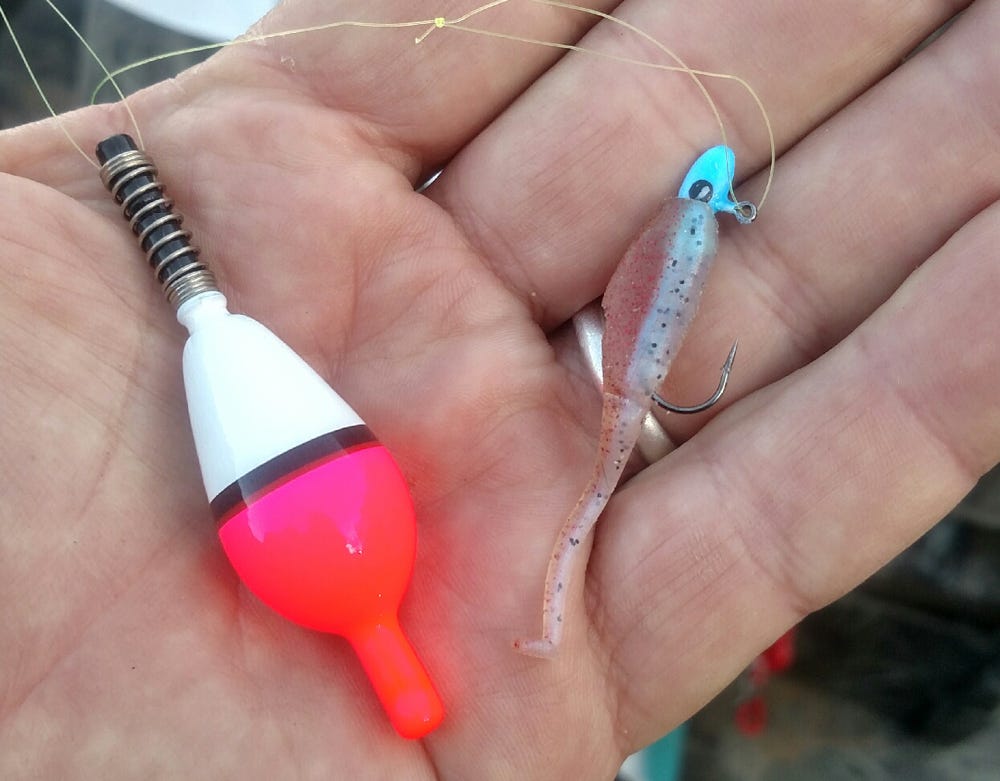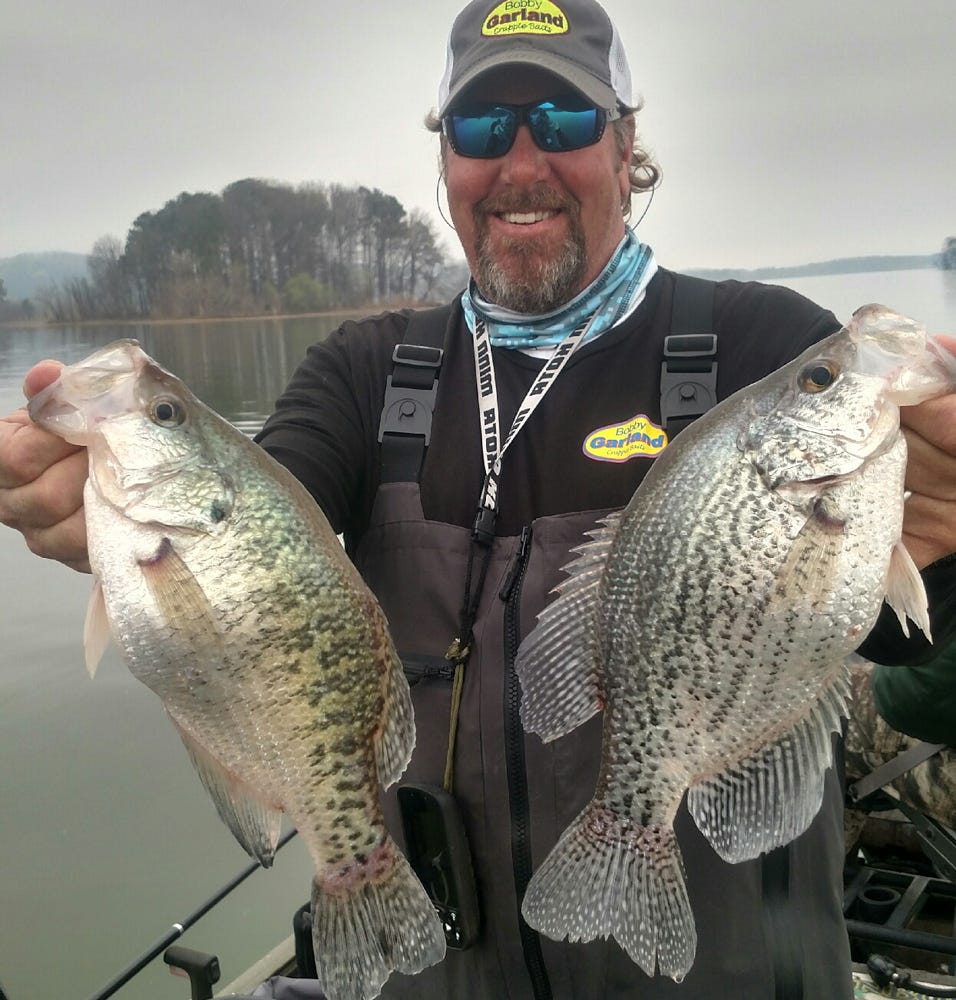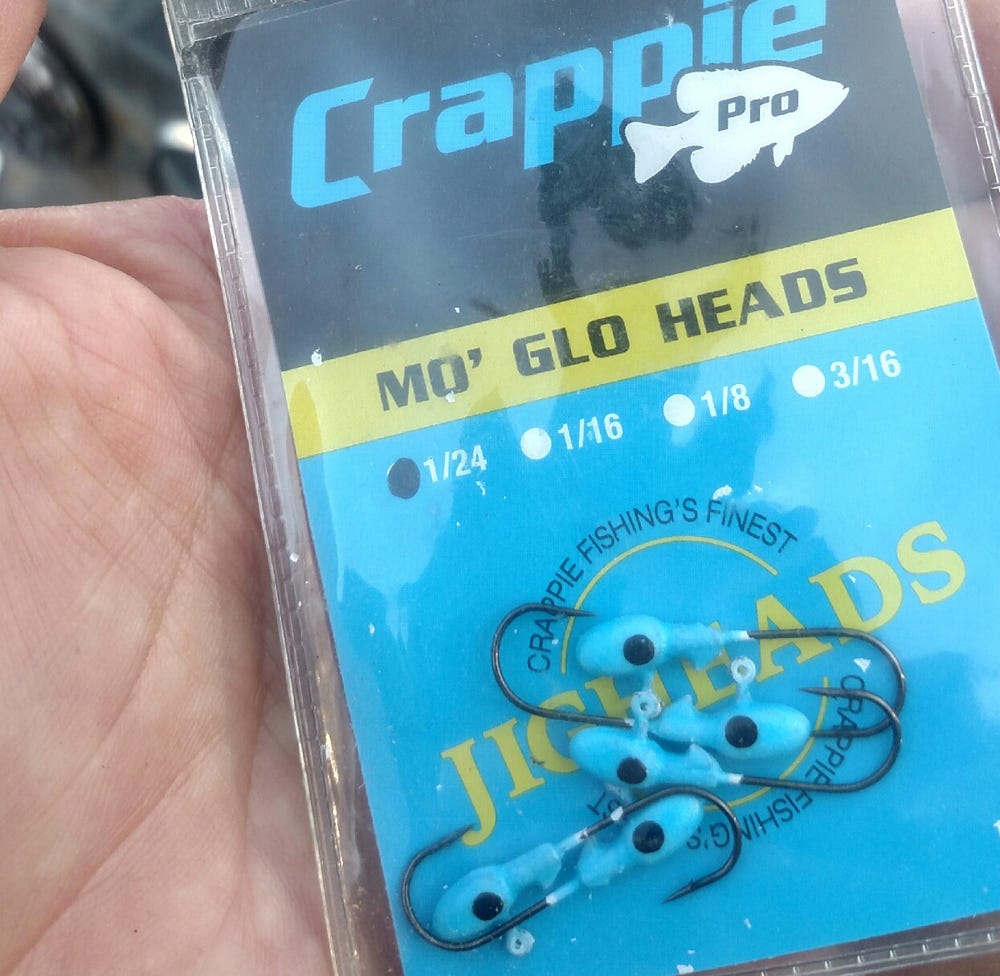- Dec 14, 2020
How to Catch Crappie with the Float & Fly Technique
Learn the secrets of an approach that capitalizes on the crappie’s winter behavior and produces outstanding fishing this time of year.
Anglers often wonder how to catch crappie when the water gets cold and the fish start getting finicky. For Weiss Lake Guide Lee Pitts, that answer often comes in the form of the “float & fly” technique.
“Fly” in this technique’s name comes from the technique’s origin. Popularized as a winter bass tactic on clear mountain lakes in Kentucky and Tennessee, float-and-fly bass fishing is traditionally done with small hair jig, known regionally as a fly.
How to catch crappie with a float & fly essentially mirrors the bass anglers’ approach, except in types of areas fished, the even smaller size of the jig and the common use of soft plastics bodies on jigs. For Pitts, the perfect “fly” is a Bobby Garland Baby Shad or a 2-inch Slab Slayer on a 1/24-ounce Mo’ Glo Jighead and 6-pound-test line
“You want tight, subtle movements when the water is cold,” Pitts said, “not something with a lot of big movement.”
A 1/24-ounce head allows for a fairly slow fall when matched with either bait, but provides just enough weight to keep the line tight beneath the float, which is critical for controlling the lure’s movements and for detecting the lightest of bites.
The Technique


The float & fly rig is simple, with a small spring float set to suspend a jig or fly. How to catch crappie with a float & fly differs from other float/jig techniques in a couple of ways. First, the rig is set fairly deep, normally 5 to 8 feet for Pitts. Second, it’s a s-l-o-w and very subtle presentation, designed to appeal to fish that are winter slowed and suspending and relating to shad that are likewise winter slowed.
Using an 8-foot slow action rod, which is important for casting somewhat awkward rigs, Pitts flops the rig behind him, like a slower version of a fly fisherman’s backcast, and then lobs his rig to the area where the fish are. He then lets the fly fall until it reaches its set depth, standing up the float, and waits another couple of seconds before starting his presentation.
“Just pull it a little, moving the float enough to make the bait rise a bit,” he said. “When it settles again is usually when they hit it.”
Pitts’ presentation is a combination of small, gentle pulls and slight twitches, always broken by pauses so the fly can sink again and suspend. He varies the way he moves the rod tip and the lengths of pauses and pays attention to the crappie’s response. The common thread is that presentations are slow and include significant pauses.
“They don’t want to chase and don’t want anything aggressive, and they’ll hit a float & fly when they won’t touch anything else,” Pitts said.
How to Find Winter Crappie
Knowing how to catch crappie is critical, but before you can catch them you have to locate them. Because the float & fly presentation is slow by nature, finding schools of fish and targeting those fish is extra important. Pitts searches with his electronics, relying on side imaging to see a broader area and to avoid going over the top of the fish.
When he does find fish, he commonly tosses a marker buoy in the direction of the school to provide a visual reference point. He then circles around and looks at the school from different angles to get a good idea of its size and location and positions the boat a cast’s distance from the end of the school.
Pitts looks for schools of crappie in major creek arms, from the mouths of the creeks to about halfway back. They are typically near the channel edge or over the creek channel, often suspended in water that is 20 or more feet deep, with the best areas often being directly out from the pockets the fish will be spawning in once winter gives way to spring.
The crappie move regularly, following shad schools, so finding bait is an important step toward finding the crappie. The movements are gradual, though, so once Pitts finds fish, he doesn’t normally have to chase them.
Watch for Light Bites


“They usually don’t take it under,” Pitts said about float-and-fly crappie bites. “Eighty percent of the time they’ll just roll the float over on its side even just bump it.”
Paying careful attention is critical, therefore, as is float selection. You need a sensitive well-balanced float that stands up when the jig is hanging naturally but transmits even the slightest movements of bait hanging beneath it.
A Thill Oval Shorty spring float is sized right for the task, and its balsa construction provides the critical sensitivity. The oval shape and short bottom stem also allow this style of float to track straight when you work the rig.
Pitts watches his float all the time and sets the hook with a quick snap any time the float turns sidewise of bobs even slightly.
Best Time to Catch Crappie on Float & Fly




The float & fly bite heats up for Pitts as the water cools toward the end of fall and excels during mid-winter, when it hard to catch crappie with a lot of other techniques. It typically remains strong through around the end of February.
During March, when fish move shallower and relate to more wood, he’ll continue to fish jigs beneath floats. The float is set much shallower, though, and he fishes faster and adds more action, so it really isn’t float & fly fishing anymore.
Top Crappie Destination: Weiss Lake
Alabama’s Weiss Lake, often dubbed “The Crappie Capital of the World,” earns its name year after year by producing big numbers of quality black and white crappie, with plenty of legitimate slabs in the mix. The uppermost lake in the Coosa River chain, Weiss impounds 30,000 acres, primarily in Alabama, but with 2,000 acres in Georgia. It’s a diverse lake with a great mix of shallow and deep fish habitat, crappie cover ranging from plentiful docks to offshore brush, and a mix of water colors.
Lee Pitts operates Pitts Outdoors, and is one of the lake’s top guides. He lives on the lake and has been guiding there for more than 15 years. Crappie are his Pitts’ primary focus, but he is also a tournament bass angler and guides for bass, stripers and even trophy bluegill and shellcracker from time to time.
4 Fabulous Crappie Lure Colors
Color matters! Pitts keeps a broad range of bait colors handy and mixes things up to let the fish decide. That said, he has his favorite, and collectively, they provide good options for a broad range of conditions.
- Cajun Cricket
- Bluegrass
- Monkey Milk
- Blue Ice



